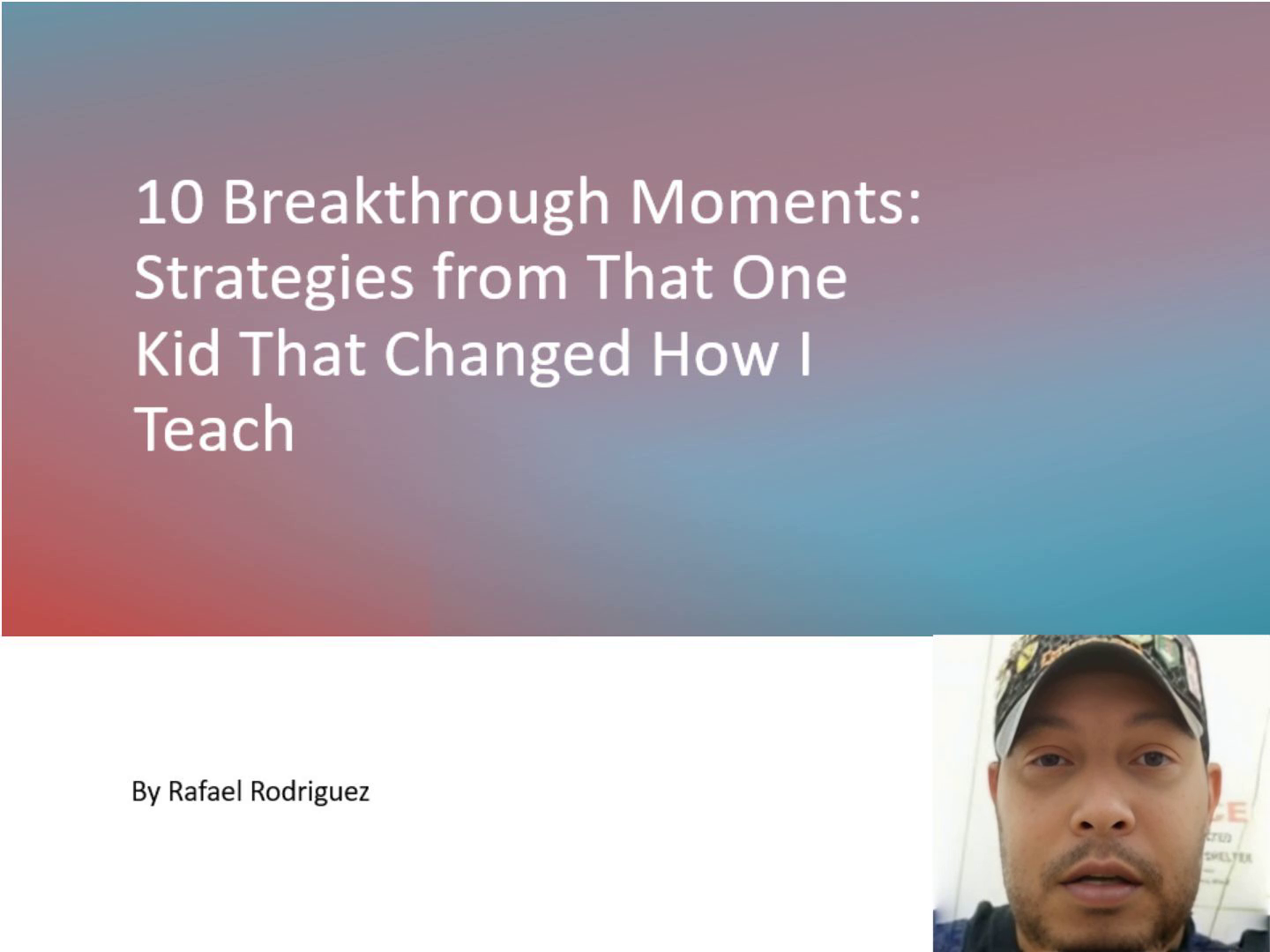
10 Breakthrough Moments: Strategies from That One Kid That Changed How I Teach
Scene 1 (0s)
10 Breakthrough Moments: Strategies from That One Kid That Changed How I Teach.
Scene 2 (13s)
“Kids don’t hate school. They hate feeling stupid.”.
Scene 3 (28s)
Relationship before content.. Trust and connection with students open the door to academic engagement..
Scene 4 (40s)
Don’t take it personally.. Student behavior reflects their inner world, not your failure. Stay calm and centered..
Scene 5 (1m 0s)
Success breeds motivation.. When students feel they can succeed, their willingness to try increases. Small wins matter..
Scene 6 (1m 15s)
Keep your cool—always.. De-escalation is key. A calm adult helps a student regulate more than punishment ever could..
Scene 7 (1m 49s)
“What happened to you?” vs “What’s wrong with you?”.
Scene 8 (2m 14s)
Use the power of apology.. Admitting when we’re wrong teaches accountability and builds respect..
Scene 9 (2m 37s)
Celebrate the little things.. Acknowledging small victories makes students feel seen and motivates positive choices..
Scene 10 (2m 48s)
Give students voice and choice.. Offering flexibility helps students feel valued and increases ownership of learning..
Scene 11 (3m 7s)
Find the why behind behavior.. Behavior is communication. Looking deeper helps meet student needs effectively..
Scene 12 (3m 42s)
Closing Thoughts. These strategies reshaped how I connect with and support students. I’m excited to continue growing as an educator..
Scene 13 (3m 55s)
**Academic Disclaimer** *This presentation is intended solely for educational purposes as part of a course assignment. All content, interpretations, and reflections are based on the book* **That One Kid** *by Brian Mendler, Second Edition. The views and opinions expressed in this presentation are those of the presenter and do not necessarily reflect the official policy or position of any affiliated institution or educational organization. All references to the book are used under fair use guidelines for academic and instructional purposes.*.